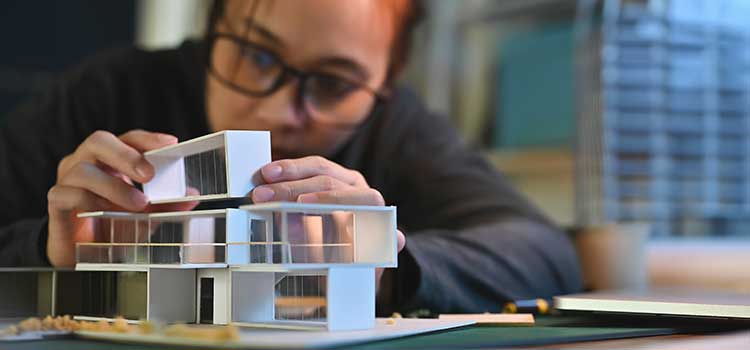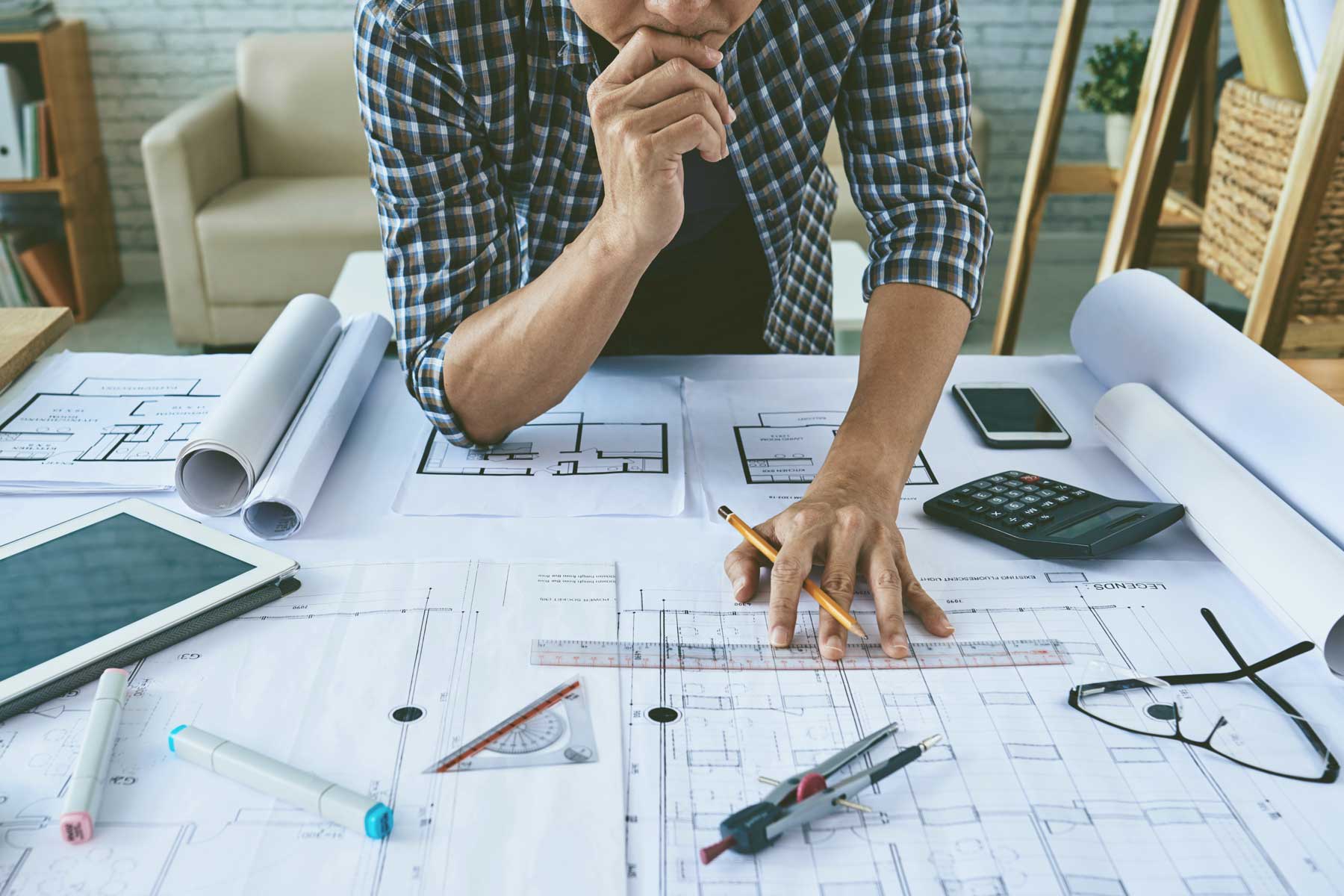Architect Services Detailed: What to Expect from Beginning to End
Architect Services Detailed: What to Expect from Beginning to End
Blog Article
Recognizing the Diverse Occupation Paths Available for Aspiring Architect
As a hopeful Architect, you have a world of occupation paths waiting for you. Whether you're attracted to conventional design or the nuances of lasting style, there's a niche that aligns with your interests.
Traditional Style: Designing Structures and structures
Conventional architecture concentrates on creating buildings and structures that blend performance with aesthetic allure. As you explore this field, you'll value the intricate balance in between type and purpose. You'll learn to attract inspiration from historical styles, incorporating aspects like balance, products, and workmanship. Your layouts can reflect cultural heritage, showcasing neighborhood customs while fulfilling modern-day demands.
You'll create abilities in drafting, model-making, and website evaluation, enabling you to envision and connect your ideas successfully. Engaging with customers, you'll need to recognize their vision and equate it into practical styles.
Moreover, developing codes and sustainability techniques are important in your job, ensuring your structures are safe and ecologically pleasant. As you expand in your career, you'll locate chances in property, commercial, or also reconstruction projects, each offering distinct difficulties. Welcoming standard style leads the means for a satisfying occupation that pays tribute to the past while forming the future.
Urban Planning: Forming Areas and Public Spaces
As a hopeful Architect, you can play a crucial role as an urban organizer, changing exactly how neighborhoods function and communicate. By using community engagement strategies, you'll assure that locals have a voice fit their setting. And also, incorporating lasting design concepts will assist develop rooms that not just fulfill today's requirements but also secure the future.
Role of Urban Planners
While lots of could assume of architects as the sole visionaries behind buildings, metropolitan coordinators play a crucial duty in forming the wider landscape of communities and public areas. They assess land usage, zoning regulations, and area requires to produce lasting settings that improve lifestyle. By collaborating with various stakeholders, you'll aid create parks, transportation systems, and suburbs that advertise social communication and access. Urban coordinators also concentrate on environmental considerations, making sure that developments incorporate environment-friendly areas and support biodiversity. Your knowledge in spatial layout and neighborhood dynamics enables you to envision future growth while preserving cultural heritage. In this crucial function, you'll straight influence how individuals experience their environments, making every task a chance for favorable modification.
Community Interaction Strategies
Reliable area involvement methods are essential for city organizers to assure that the voices of locals are heard and valued in the preparation procedure. To cultivate significant discussion, you must prioritize open online forums and workshops where community participants can share their ideas and worries. Use studies and social media sites to reach a more comprehensive target market, guaranteeing diverse perspectives are consisted of. Working together with local companies can improve trust fund and promote deeper links. It is necessary to give clear info regarding proposed jobs and decision-making procedures, enabling homeowners to feel informed and encouraged. By proactively listening and including feedback, you'll develop spaces that mirror the area's needs, eventually bring about even more lasting and effective metropolitan environments. Embrace transparency and constant dialogue for lasting impact.
Sustainable Style Concepts
When creating metropolitan areas, including lasting design principles is essential for producing environments that thrive both environmentally and socially. Consider integrating green spaces, like gardens and parks, to enhance biodiversity and enhance air top quality.
Creating with water preservation in mind is also crucial-- believe concerning rainfall gardens and permeable surfaces to manage stormwater. Involving area members during the preparation procedure warranties that the rooms you develop fulfill their needs and encourage social interaction. By accepting these concepts, you'll add to dynamic, sustainable metropolitan landscapes that benefit everybody.

Landscape Architecture: Developing Sustainable Outside Atmospheres
As you explore landscape architecture, you'll discover necessary design principles that develop gorgeous and useful outside spaces. Lasting practices play a crucial duty in making certain these environments thrive while reducing ecological impact. Plus, you'll discover a variety of profession chances that permit you to make a genuine difference in how individuals engage with nature.
Layout Concepts in Landscape
Comprehending layout principles in landscape architecture is important for developing lasting outside atmospheres that integrate with nature. You'll require to consider components like equilibrium, range, and proportion to assure your styles feel cohesive and inviting. Including native plants not just improves biodiversity but likewise lowers water usage, making your landscape resilient. Think of the circulation of space and just how individuals connect with it; pathways and seating locations need to welcome exploration and relaxation. Furthermore, focus on seasonal modifications, designing with products that complement the surroundings year-round (Architect). By focusing on sustainability and looks, you can develop outdoor rooms that enhance the area and advertise wellness. Accepting these concepts will establish a strong structure for your profession in landscape style.
Sustainable Practices Summary
Lasting methods in landscape design not only focus on aesthetics however additionally focus on eco-friendly health and wellness and source preservation. By integrating indigenous plants, you improve biodiversity and reduce the requirement for chemical fertilizers and pesticides. Carrying out efficient irrigation systems more info assists conserve water and reduces runoff, securing close-by environments. You can create rooms that advertise soil health, such as using organic materials and exercising permaculture principles. In addition, including green infrastructure, like rain yards and porous pavements, aids in stormwater administration and reduces city warm. When you create outdoor environments with sustainability in mind, you contribute to a healthier earth and give areas that promote community connection. Eventually, these practices ensure your designs benefit both people and the setting for years to come.
Career Opportunities Exploration
With a strong structure in lasting techniques, landscape style provides a variety of profession paths that permit you to make a purposeful effect on the atmosphere. You can function as a landscape developer, developing aesthetically pleasing and functional outside spaces, or focus on eco-friendly repair, helping to revitalize damaged environments. Urban organizers typically work together with landscape architects to develop green areas in urban settings, boosting city livability. If you're enthusiastic about education, take into consideration ending up being a landscape design teacher, motivating future generations. Furthermore, you might work with nonprofits focused on ecological sustainability or involve in research study to innovate new practices. Each course not only shapes attractive atmospheres but also cultivates a healthier world for future generations.
Sustainable Style: Concentrating On Eco-Friendly Practices
As you discover your job in design, accepting eco-friendly techniques can establish you apart in an affordable field. Sustainable design concentrates on producing structures that minimize environmental impact while enhancing passenger well-being. By incorporating renewable products, energy-efficient systems, and sustainable building techniques, you'll contribute to a greener future.
Begin by acquiring knowledge of eco-friendly qualifications like LEED or BREEAM, which can bolster your credentials. Take into consideration how all-natural light, air flow, and thermal performance can optimize design. Collaborate with designers and environmental experts to introduce remedies that reduce waste and preserve sources.
Do not neglect the importance of neighborhood involvement-- appealing local stakeholders can inspire layouts that balance with the setting. As customers increasingly focus on sustainability, your know-how in environment-friendly methods will certainly not just draw in tasks yet additionally satisfy your enthusiasm for responsible style. Welcome this critical facet of the profession, and enjoy your job flourish.
Historic Conservation: Shielding and Recovering Social Heritage
While you commence on your building trip, take into consideration the important duty of historic conservation in keeping our social heritage. This area concentrates on the security and read more restoration of considerable buildings, sites, and structures that inform the tales of our past. By participating in historical conservation, you'll aid guard the architectural legacy that forms community identity.
As a historical conservation Architect, you'll analyze historical value and assess the problem of structures. You'll function very closely with chroniclers and conservationists to ensure genuine restoration methods are employed. This job course allows you to blend creative thinking with research study, allowing you to design services that value original materials and workmanship.
Your work not only adds to sustainability by recycling existing structures but also fosters a sense of pride within neighborhoods. Embracing this course will help you come to be a guardian of background, maintaining the tales and aesthetics that improve our lives.
Inside Design: Enhancing Indoor Spaces
Historic preservation and indoor style both share a dedication to enhancing the built setting, but they concentrate on different aspects. While historical preservation highlights maintaining a framework's social and historic value, interior architecture absolutely nos in on optimizing indoor areas for functionality and aesthetics.
As a hopeful Architect, you'll discover that interior architecture allows you to blend creative thinking with technological skills. You'll make rooms that not only look great yet additionally promote comfort and effectiveness. This field includes recognizing exactly how light, color, and products engage within a room, impacting state of mind and usability.
You'll service different tasks, from household homes to business workplaces, making sure that each environment satisfies the needs of its owners. By focusing on customer experience, you can change insides into practical and inspiring rooms, making a significant effect on exactly how individuals connect with their surroundings. Embrace the opportunity to boost interior settings and form the way individuals live and function.
Industrial Style: Merging Functionality With Appearances
Industrial design plays a crucial duty in developing items that seamlessly mix looks with functionality, making sure that what you utilize day-to-day is not only aesthetically attractive however additionally useful. As an aspiring Architect, you could engage on your own in this area, concentrating on developing everything from furnishings to consumer electronics. Your work includes recognizing individual demands, materials, click here and manufacturing processes, allowing you to produce ingenious options that boost everyday experiences.
In industrial layout, you'll commonly work together with designers, marketers, and producers, guaranteeing that your layouts are not just lovely yet additionally viable. This occupation course uses a vibrant environment where creativity meets practicality, making it a gratifying option for designers interested in shaping the products of tomorrow.
Regularly Asked Inquiries
What Educational Credentials Do I Need to Become an Architect?
To end up being a designer, you'll require an expert level in design, typically a Bachelor's or Master's. Furthermore, you'll have to finish a teaching fellowship and pass the Architect Registration Assessment to exercise lawfully.
Exist Certification Needs for Various Building Career Paths?
Yes, there're accreditation requirements for various building courses. Architect. You'll need to pass tests, full internships, and often seek specialized training, relying on your selected emphasis, like landscape architecture, city style, or historic conservation
What Software Application Skills Are Vital for Designers Today?

Just How Can I Gain Practical Experience While Researching Style?
You can gain functional experience by interning at architectural firms, joining layout competitors, offering for community jobs, or working together with schoolmates on real-world assignments. These possibilities boost your skills and develop valuable links in the sector.
What Task Opportunities Exist Outdoors Standard Style Firms?
You can discover different task possibilities outside standard design companies, like urban planning, indoor style, landscape architecture, construction administration, property growth, and even roles in sustainability consulting. Each deals special challenges and rewards.
Whether you're drawn to standard design or the subtleties of sustainable style, there's a specific niche that lines up with your rate of interests.When creating city spaces, including lasting design concepts is vital for creating settings that flourish both environmentally and socially.As you explore landscape design, you'll discover vital layout concepts that develop lovely and useful outside areas.Comprehending design concepts in landscape architecture is important for creating sustainable exterior atmospheres that harmonize with nature.In industrial style, you'll often work together with marketing professionals, designers, and manufacturers, making sure that your styles are not only stunning however also practical.
Report this page